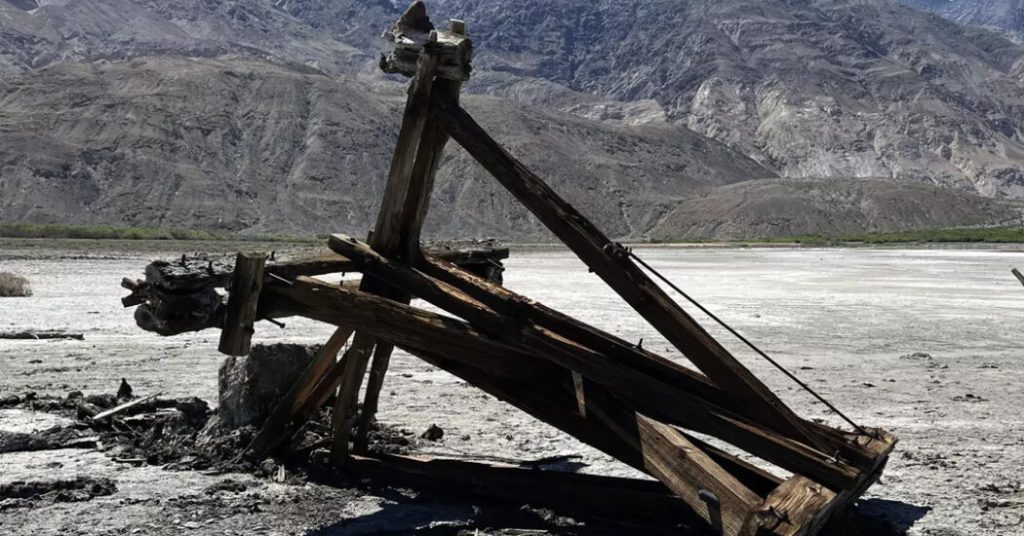A historic timber-and-iron tower that once supported a tram carrying salt in California’s Death Valley National Park was brought down by a visitor in April in an attempt to pull a stuck pickup truck out of the mud. The National Park Service launched an investigation to determine who was responsible for the damage, leading to a confession from the individual involved, who cited desperation while being stuck in mud. The tower, located in the Saline Valley, was in poor condition due to exposure to extreme temperatures and saltwater, and finally succumbed to the weight of the truck.
The fallen tower was one of four remaining structures from an original set of 20 that supported a tramway built in 1911 by the Saline Valley Salt Company to transport salt from the Saline Valley over the Inyo Mountains to the Owens Valley. The tramway was a remarkable feat of engineering at the time, climbing over 7,000 feet with vertical grades of up to 40 degrees. Despite the challenging terrain, horses were used to transport lumber and iron, ultimately bankrupting the company. The tramway ceased operation in 1930, but many towers were still standing, garnering a nomination for inclusion in the National Register of Historic Places.
The delicate salt flats around Badwater Basin in Death Valley National Park are a harsh yet fragile environment, home to delicate crystals that can be easily destroyed underfoot. The fallen tower was evaluated to have been in poor condition due to periodic flooding from a nearby salt lake, which contributed to its eventual collapse. The Park Service was already planning a stabilization project for the remaining towers, funded through the Inflation Reduction Act, before the incident took place. Now, efforts are underway to reassess the damage and develop a plan for responsible restoration of the salt tram and its remaining structures.
The video of the tower being pulled down by the pickup truck generated a significant response from the public, with numerous calls and messages received by the Park Service. The individual responsible for the damage expressed regret and accepted full responsibility for their actions, acknowledging that their actions of desperation to free the truck from the mud had unintended consequences. Despite the tower’s poor condition and impending stabilization project, the incident served as a stark reminder of the importance of preserving historical artifacts and structures within the national park for future generations to enjoy.
The death of the tower, which marked the edge of a hiking trail through the Saline Valley wilderness, symbolized both a loss of history and a call to action for better education and care of such structures within Death Valley National Park. Superintendent Mike Reynolds noted the tenacity it took to build the tramway and expressed amazement at the engineering feat accomplished over a century ago. The collapse of the tower highlighted the need for greater awareness and respect for the park’s historical landmarks, as well as the fragile ecosystems that exist within its boundaries.
Moving forward, the Park Service is focused on conducting a thorough damage assessment and developing a restoration plan for the remaining towers and the salt tram as a whole. Efforts to preserve and protect these historical structures, such as re-anchoring the fallen tower using available funds, will be a priority in the coming months. The incident serves as a teachable moment for visitors and park staff alike, emphasizing the importance of responsible behavior and stewardship when interacting with natural and historical elements within Death Valley National Park.


